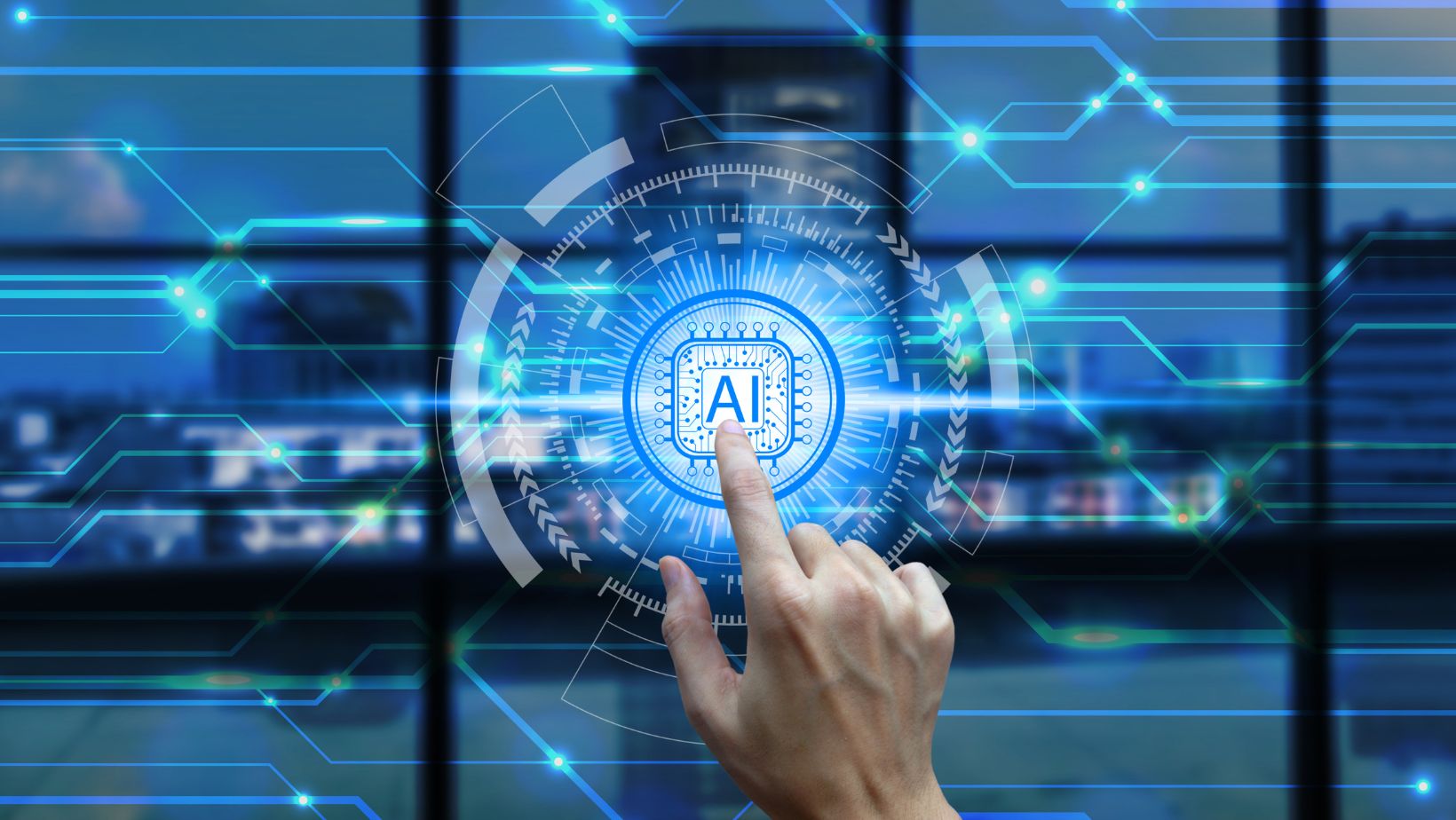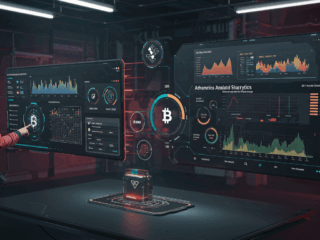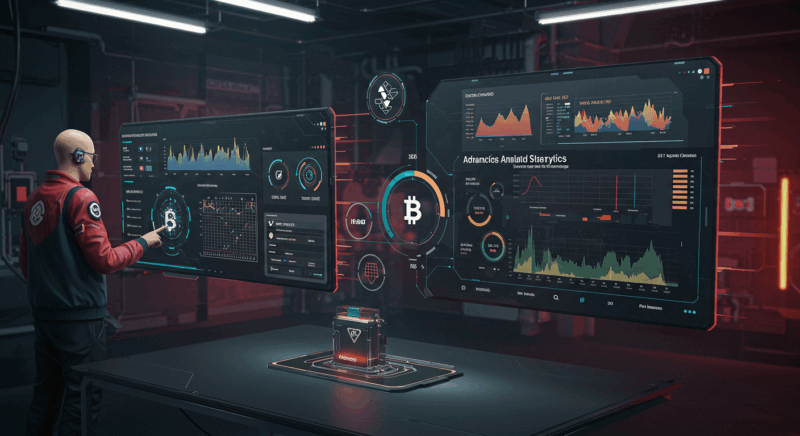
Remember when we used to dream about talking to our computers like they were sentient sidekicks? In 2025, that’s not sci-fi anymore, it’s standard. At the heart of this revolution lies a dramatic leap in chip architecture. AI accelerators are no longer niche gear for server racks or robotics labs. They’re baked right into the guts of the latest PCs, smartphones, and gadgets.
But here’s the twist: these chips aren’t just about speed. They’re the enablers of behavior. They’re the reason Candy AI can feel less like a chatbot and more like someone who gets you.
Welcome to the Neural Era
The AI chip boom didn’t happen overnight. We got here on the backs of three converging trajectories: generative AI’s soaring demand, shrinking transistor sizes, and an arms race between chipmakers.
Take the Apple M4 for instance. It ships with a 38 TOPS (trillion operations per second) NPU (Neural Processing Unit), compared to just 18 TOPS in the M3. That’s more than double the on-device AI horsepower in a single generation. Why? Because modern workloads are increasingly inference-heavy, everything from AI photo editing to LLM-powered keyboard suggestions.
Meanwhile, Qualcomm’s Snapdragon X Elite is making similar waves in Windows laptops. With 45 TOPS and dedicated AI cores, it enables real-time audio isolation, object recognition, and translation, all offline. No cloud latency. No privacy concerns. Just speed and smarts.
From Laptops to Pockets: AI in Your Palm
Smartphones are the frontline of this AI chip arms race. And that’s because they’ve become the testing grounds for practical, everyday AI use.
Samsung’s Galaxy S24 Ultra, for example, leverages the Snapdragon 8 Gen 3 chip with on-device language translation, summarization, and live image editing using generative AI. Benchmarks show it can handle multi-modal queries with just a 120ms delay, barely perceptible.
Google’s Pixel 8 Pro, meanwhile, showcases what happens when chip and software teams co-design for AI from the start. The Tensor G3 chip inside isn’t the most powerful on paper (only 10.4 TOPS), but it’s optimized for Google’s AI stack, including Gemini Nano. That means better real-time photo retouching, voice recognition, and adaptive battery usage.
In short: the silicon race has gone contextual. It’s no longer about who has the most cores. It’s who can accelerate useful AI.
Servers Built for Emotion
While edge AI is dazzling, most AI companions still rely on serious server infrastructure. And the brains behind platforms like Candy AI aren’t just software, they’re powered by some of the most sophisticated hardware available today.
Data centers running AI chat companions typically use a blend of GPUs and custom ASICs (Application-Specific Integrated Circuits) optimized for inferencing large language models. For instance, NVIDIA’s H100 Tensor Core GPUs can process up to 30 times more transformer operations than their previous A100 units. Each H100 chip can deliver 700 AI TOPS, and when scaled across clusters, you’re looking at multi-exaflop performance.
That’s the kind of firepower that enables AI models to not just respond with canned replies but dynamically infer tone, context, and emotional subtext. It’s how Candy AI maintains fluid conversation without stutters, and how it adapts to your behavior in real time.
Decentralized Chips? Yep, That’s a Thing
The chip revolution isn’t just a Big Tech arms race. Smaller players are exploring decentralized AI infrastructure, particularly in the crypto and Web3 space. Companies like Gensyn and io.net are creating decentralized GPU networks that allow idle computing power to train and run AI models.
The logic is simple: you don’t need a Google-sized budget to run neural models. You need clever allocation. And these new platforms are using distributed compute nodes to deliver inference performance for everything from trading bots to AI voice assistants.
While still early, the idea that your AI companion might run on a cluster of GPUs owned by hobbyists around the world is both terrifying and exhilarating. Welcome to the democratized AI compute economy.
Smartphones vs Laptops vs Desktops
So, who’s winning the AI hardware race in 2025?
- Smartphones: The most aggressive in chip-level AI deployment. Practical, useful, and intimate.
- Laptops: The bridge, balancing performance with portability. Perfect for creators and developers.
- Desktops: Still the kings of raw power. If you want to fine-tune a model or run local inference, nothing beats a workstation with a beefy GPU.

Each has its role, and each now ships with AI-specific silicon. Even budget devices under $400 are getting entry-level NPUs capable of handling translation and voice commands offline.
Why AI Companions Feel Real Now
Let’s circle back. We’re not just talking about chips doing math. We’re talking about emotional presence.
AI companions in 2025 feel more alive not because their training data improved, but because their response times, contextual awareness, and even speech rhythms are better. That’s a hardware story. If Candy AI pauses for 200ms to “think,” it feels human. If it stutters due to latency, it breaks the illusion.
And that illusion is incredibly sensitive. Realism isn’t about perfection, it’s about believable imperfection, delivered at speed. Without the low-latency AI chips both in data centers and on your phone, these experiences would collapse.
The Quiet Leap in AI Audio Chips
One area seeing a rapid yet quieter transformation is audio-specific AI hardware. Companies like Synaptics and XMOS are rolling out DSPs (Digital Signal Processors) built from the ground up for natural language interfaces. These chips can do everything from keyword detection to ambient noise separation on-device.
For instance, Synaptics’ VS680 audio SoC delivers over 1.2 TOPS focused entirely on always-on voice interfaces, allowing for wake word detection, speaker ID, and contextual follow-up, all without calling the cloud. It’s already being embedded in wearables and smart home hubs.
Another overlooked yet growing area is smart automotive audio systems. Car manufacturers are embedding AI audio chips into steering wheel panels and cabin sensors to manage voice-controlled infotainment systems, driver alerts, and even emotion-based cabin lighting, all handled locally to maintain safety and responsiveness.
Gaming Consoles and AI Uplift
Although gaming is more software-driven, next-gen consoles are starting to embed AI accelerators, particularly for upscaling and game physics.
Sony’s PS5 Pro rumors point to a built-in AI processor aimed at real-time image generation, dynamic NPC behavior, and conversational agents. If accurate, that marks a big shift from cinematic pre-scripting to live AI-driven immersion.
Microsoft’s Azure-based PlayFab backend already uses cloud GPUs to deliver NPC dialogue through neural synthesis, hinting that future Xbox models may lean further into local AI chips as a latency-saving measure.
AI Sensors and Edge AI in Wearables
The wearable market is also entering a new phase, where AI chips not only monitor biometric data but act on it in real-time. For example, Fitbit and Garmin are testing chips capable of predictive heart rate variance analysis that adjusts notifications or activity prompts.
Furthermore, wearable AI sensors powered by ultra-low-power NPUs (such as those from Ambiq or Syntiant) allow sleep coaching, mood detection, and contextual alerts to happen in real time—no server calls, just embedded intelligence.
AI and Augmented Reality
Apple’s Vision Pro headset is a reminder that AI chips are also critical in augmented and mixed reality. The headset uses the R1 chip specifically for low-latency sensor fusion and contextual computing. Without this chip, tasks like gaze prediction, hand tracking, or real-time scene understanding wouldn’t be responsive enough.
With AR being an emerging battleground, expect Qualcomm, Apple, and even Meta to release even more purpose-built AI chips in 2026 focused on spatial computing.
Where AI Silicon Goes Next
One overlooked arena for AI chips is industrial robotics and manufacturing. Companies like Siemens and ABB are testing AI chipsets directly on the factory floor, allowing robotic arms to respond to shifting inputs without server latency. These chips also provide predictive maintenance, identifying wear or failure before it causes downtime.
Another area? Personal robotics. Early models from companies like Figure.ai are showing how neural accelerators allow for on-device gesture reading, speech synthesis, and emotional inference, all critical for human-like interactions.
Educational hardware is also changing. AI chip-equipped devices can now adapt content in real-time based on user feedback and eye-tracking. In classrooms, tablets powered by low-wattage AI chips deliver tailored curricula to students, boosting learning retention.

One emerging area is AI-enhanced microcontroller units (MCUs), which are now being tested in low-bandwidth environments like agriculture and environmental monitoring. These chips, when embedded in simple IoT sensors, can track air quality, soil moisture, and energy consumption, then provide AI-powered alerts or actions, without needing to connect to a larger system. This hyper-local intelligence model is becoming increasingly important for rural deployments and ecological initiatives.
A Predictive Future
In the near future, expect AI chips to be embedded in places you’d never expect—from refrigerators that detect spoilage and suggest recipes, to smart mirrors that analyze skin and recommend grooming products. As the cost of AI silicon drops, ubiquity becomes inevitable.
That means our interactions with technology will shift from conscious queries to passive, adaptive environments. Your car may sense your mood and adjust music accordingly. Your office desk might prep your calendar based on posture and keyboard patterns. This future relies entirely on the kind of chip-level acceleration happening today.
Where Intelligence Lives Now
No, you don’t need a spaceship or a talking robot to live in the future. You just need a device powered by the right silicon.
In 2025, AI chips are shrinking while their roles expand. They don’t just speed things up, they breathe life into apps, games, assistants, and companions. Whether it’s your phone predicting your next task or a wearable silently guiding your routine, intelligence now lives in the hardware itself.
This isn’t a sci-fi fantasy. It’s just how the best tech works now, quiet, quick, and always ready to adapt.












